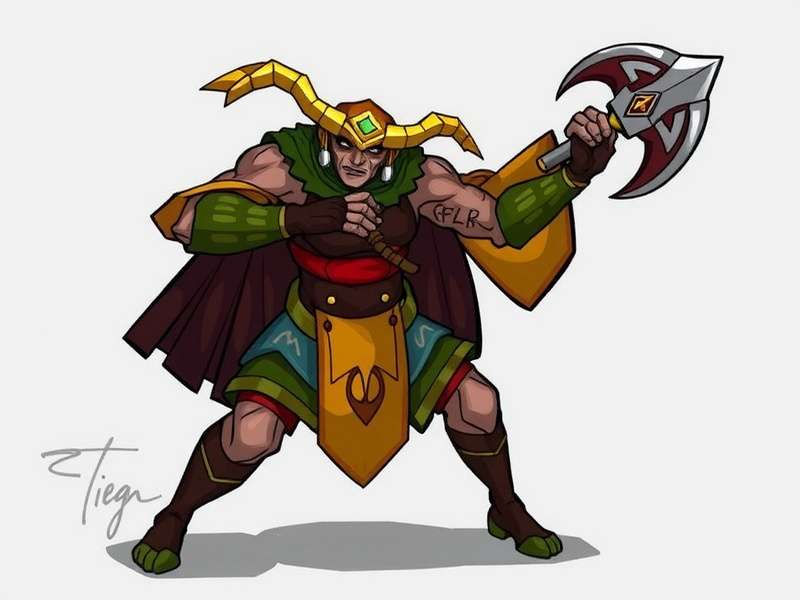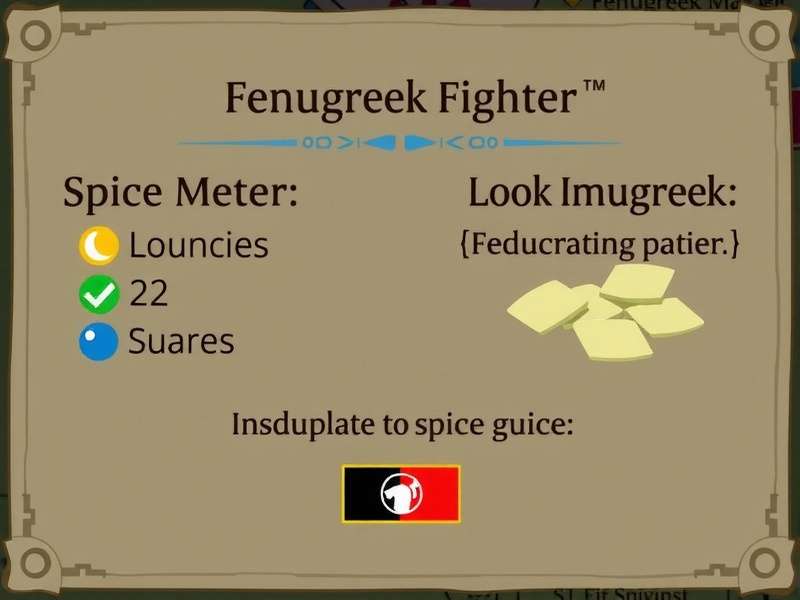Fenugreek Fighter: India's Premier Action Game
Fenugreek Fighter has taken the Indian gaming scene by storm, blending traditional cultural elements with fast-paced action gameplay. Developed by a team of passionate Indian game designers, this mobile game has amassed over 10 million downloads across India since its launch in 2022.

The game's unique selling point lies in its incorporation of Indian mythology, festivals, and cuisine into its combat system. Players control characters inspired by Hindu deities and historical figures, each with special abilities based on their cultural significance. The game's vibrant visuals and energetic soundtrack celebrate Indian heritage while delivering an adrenaline-pumping gaming experience.
Gameplay Mechanics
Fenugreek Fighter features a 3v3 battle arena where players compete in short, intense matches lasting 3-5 minutes each. The core combat system combines traditional fighting game mechanics with unique elements:
-
Spice Powers: Each character has a special "spice meter" that fills as they deal damage. When full, players can unleash devastating spice-based attacks like chili fireballs or turmeric shields.
-
Festival Modes: Special limited-time modes based on Indian festivals like Diwali (with fireworks-based abilities) and Holi (with color-throwing attacks).
-
Culinary Combos: Players can combine basic attacks to create "recipe combos" that deal extra damage and have special effects.
-
Bollywood Moves: Each character has signature dance moves that can be used to taunt opponents or celebrate victories.
Characters
The game features a diverse roster of 20 characters at launch, with new additions planned through regular updates. Some fan-favorite characters include:
-
Goddess Durga: A balanced fighter with a trident weapon and the ability to summon tigers.
-
Rani Laxmibai: A swift swordswoman with excellent mobility and area-of-effect attacks.
-
Tandoori Titan: A heavyweight character who wields a giant skewer and can summon flames.
-
Bhangra Brawler: A dance-fighter who uses traditional Punjabi dance moves to confuse opponents.

Fenugreek Fighter in India
Since its launch, Fenugreek Fighter has become a cultural phenomenon in India, particularly among mobile gamers aged 18-35. The game's download statistics show remarkable regional variations:
| State |
Downloads (Millions) |
Player Rating (out of 5) |
| Maharashtra |
2.8 |
4.7 |
| Uttar Pradesh |
2.1 |
4.6 |
| Tamil Nadu |
1.7 |
4.8 |
| Gujarat |
1.5 |
4.5 |
| Karnataka |
1.3 |
4.7 |
Player Reviews
Indian players have praised Fenugreek Fighter for its cultural representation and engaging gameplay. Here are some typical reviews from the Google Play Store:
"Finally a game that celebrates our culture! The characters are so cool and the moves are amazing. Best part is playing with friends during festivals!" - Rohan K., Mumbai
"I've never seen anything like this! The spice powers are so creative and the graphics are top-notch. This is what Indian gaming should be about!" - Priya S., Chennai
"As someone who loves both gaming and Indian culture, this game is perfect. The attention to detail in the character designs and festival modes is incredible." - Arjun P., Delhi
Localization Differences
The developers have made significant efforts to localize the game for different Indian regions:
-
Language Support: The game is fully translated into 12 Indian languages including Hindi, Tamil, Telugu, Bengali, and Marathi.
-
Regional Events: Special in-game events tied to local festivals and traditions in different states.
-
Voice Acting: Characters have voice lines in regional accents for added authenticity.
-
Payment Methods: Support for popular Indian payment systems like UPI, Paytm, and PhonePe.
Indian Player Guides and Strategies
The Fenugreek Fighter community has developed numerous guides to help players improve their skills. Here are some top strategies from Indian pros:
Beginner's Guide to Spice Management
Mastering your spice meter is crucial for victory. Here's how top Indian players manage their spice:
-
Early Game: Focus on basic attacks to slowly build your spice meter while avoiding unnecessary damage.
-
Mid Game: Once you have 1-2 spice charges, look for opportunities to combo into your special moves.
-
Late Game: When your meter is full, communicate with teammates to coordinate your ultimate attacks for maximum impact.

Festival Mode Strategies
Each festival mode has unique mechanics. Here's how to dominate in popular modes:
-
Diwali Dash: Collect firecrackers scattered around the map to power up your abilities. Prioritize capturing the central firework launcher.
-
Holi Hustle: Color throws slow down enemies, so focus on covering the map in your team's color while avoiding enemy color zones.
-
Navratri Ninja: Dance challenges appear periodically - completing them gives your team powerful buffs.
Regional Character Preferences
Different regions of India show preferences for certain characters:
-
North India: Favors Goddess Durga and Tandoori Titan for their powerful area attacks.
-
South India: Prefers agile characters like Rani Laxmibai and Bhangra Brawler.
-
East India: Shows strong support for characters with cultural significance to the region.



